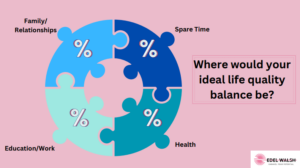In my own practice I am seeing a rise in clients experiencing burnout stemming mainly from the Covid pandemic. Not only am I am seeing a rise in burnout in the workplace, but I am also seeing a significant rise in burnout amongst students.
The WHO defines burnout as a “syndrome conceptualized as resulting from chronic workplace stress that has not been successfully managed” and describes three components of employee burnout:
- Feelings of energy depletion or exhaustion
- Increased mental distance from one’s job, or feelings of negativism or cynicism related to one’s job.
- Reduced professional effectiveness.
The symptoms of burnout can include:
- Being constantly overwhelmed, stressed, and exhausted.
- Change in sleep patterns.
- Passion has faded and has been replaced by negative cynicism.
- Loss of confidence
- Nagging doubts about your self-worth (Leiter and Maslach, 2005)
Burnout has an impact not only on your physical health but also on your mental health.
The years of research carried out by Maslach, Jackson and Leiter suggest that burnout is triggered by the following: (as cited in Moss, 2021).
- Workload
- Perceived Lack of Control
- Lack of Reward or recognition
- Lack of Fairness, and
- Values Mismatch
A useful tool I like to use when a client is experiencing burnout is the Life Quality Balance (LQB) Wheel. The LQB wheel only has four elements: work/education, health, spare time, and family/relationships.
Take some time to ranks these elements on a scale of 1-10, 1 being very poor and 10 being excellent.

When you have this exercise done, ask yourself the following questions:
- What is coming up for you here?
- How are you feeling when you look at this wheel?
- What are your physical feelings when you look at this wheel?
Once you have this done, use the LQB wheel to rank the elements of the wheel for your desired state. In other words, where would you like them to be:

Once this exercise is done, ask yourself the following:
- Which of these categories would you most like to improve?
- How could you make space for these changes in your life?
- Who can support you with this?
- What change do you want to make first?
If you feel you are experiencing burnout, it is time to act. Firstly, recognise the signs of burnout. Then seek support. Speak to somebody about what you are experiencing. Take care of both your physical and mental health. Check out my blog post, how to manage stress in the workplace here.
References:
Leiter, M., & Maslach, C. (2005). Banishing Burnout. San Francisco, USA: Jossey-Bass.
Moss, J. (2021). The Burnout Epidemic: The Rise of Chronic Stress and How We Can Fix It. USA: Harvard Business Review Press.
